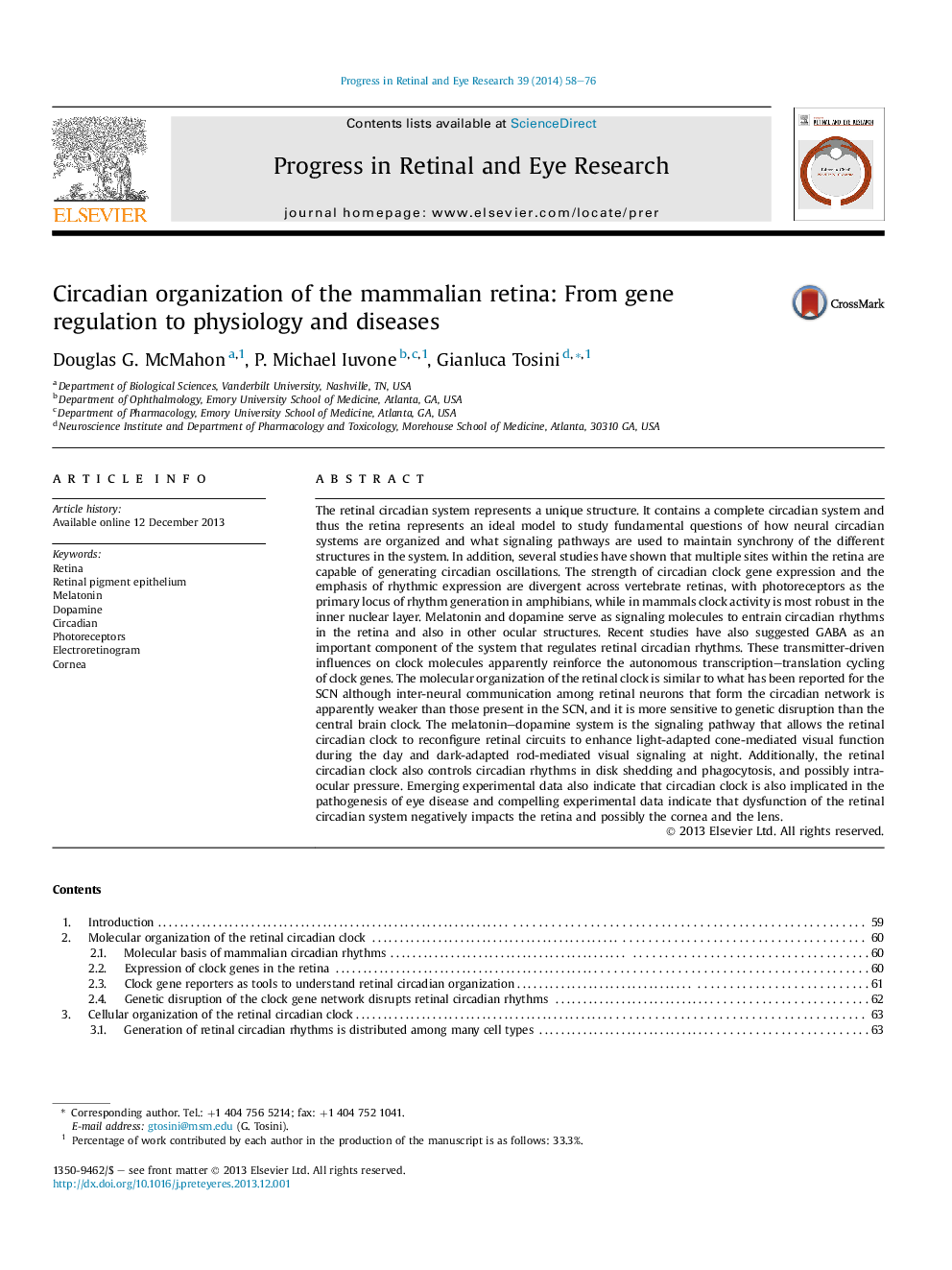| کد مقاله | کد نشریه | سال انتشار | مقاله انگلیسی | نسخه تمام متن |
|---|---|---|---|---|
| 4031954 | 1602827 | 2014 | 19 صفحه PDF | دانلود رایگان |
The retinal circadian system represents a unique structure. It contains a complete circadian system and thus the retina represents an ideal model to study fundamental questions of how neural circadian systems are organized and what signaling pathways are used to maintain synchrony of the different structures in the system. In addition, several studies have shown that multiple sites within the retina are capable of generating circadian oscillations. The strength of circadian clock gene expression and the emphasis of rhythmic expression are divergent across vertebrate retinas, with photoreceptors as the primary locus of rhythm generation in amphibians, while in mammals clock activity is most robust in the inner nuclear layer. Melatonin and dopamine serve as signaling molecules to entrain circadian rhythms in the retina and also in other ocular structures. Recent studies have also suggested GABA as an important component of the system that regulates retinal circadian rhythms. These transmitter-driven influences on clock molecules apparently reinforce the autonomous transcription–translation cycling of clock genes. The molecular organization of the retinal clock is similar to what has been reported for the SCN although inter-neural communication among retinal neurons that form the circadian network is apparently weaker than those present in the SCN, and it is more sensitive to genetic disruption than the central brain clock. The melatonin–dopamine system is the signaling pathway that allows the retinal circadian clock to reconfigure retinal circuits to enhance light-adapted cone-mediated visual function during the day and dark-adapted rod-mediated visual signaling at night. Additionally, the retinal circadian clock also controls circadian rhythms in disk shedding and phagocytosis, and possibly intraocular pressure. Emerging experimental data also indicate that circadian clock is also implicated in the pathogenesis of eye disease and compelling experimental data indicate that dysfunction of the retinal circadian system negatively impacts the retina and possibly the cornea and the lens.
Journal: Progress in Retinal and Eye Research - Volume 39, March 2014, Pages 58–76
